My head is still reeling after attending the Michigan Association for Computer Users in Learning (MACUL) conference, which took place in mid-March in Detroit. The conference, for those who haven’t attended, is “one of the Midwest’s largest educational technology conferences with 5000+ educators from across Michigan, the region, and Canada,” according to the conference website.
While there, I witnessed two days of inspiring technology ideas, three amazing keynote speeches, and 10 thought-provoking sessions.
Not to mention all of the students and teachers demonstrating some really cool technology. I attended sessions on creating a Makerspace, using technology in a reading workshop, and looking at YouTube videos as a genre of storytelling.
For those who weren’t able to make it, here are some of the major takeaways.
#MACUL17 Keynote Takeaways
#1: Ken Robinson. Sir Ken Robinson, an author and expert on creativity, reminded us that children are inherently creative. Schools should be cultivating creativity through personalization. At the same time, teachers need to connect with and customize learning for each student.
#2: Jane McGonigal. McGonigal, a game designer and the author of Reality is Broken, argued the importance of gaming techniques. Being playful and employing gaming techniques in education, she said, creates super empowered, hopeful individuals.
#3: Jennie Magiera. Magiera is, among other roles, the Chief Technology Officer of Des Plaines School District 62, in Illinois. Taking risks in education, she said, is one of the most important things teachers can do for their students.
The Maker Movement and AARI
I’m new to the maker movement, but after attending my first session, I knew that I wanted to start implementing a maker-mentality in all of my classrooms, and especially with my struggling readers in AARI, the Adolescent Accelerated Reading Initiative.
AARI teachers want our students to:
- Take risks in reading and thinking
- Find patterns in text structure
- Be creative in their representations of text
- See themselves as readers
- Feel like they’re a part of a community
- Approach new texts with a critical stance
In AARI, we also believe that it’s the process that matters–over the end results and even content.
Everything I’ve heard and read about the maker movement, so far, tells me that I’ve got to start including this kind of playful tinkering in my AARI classes. Maker education, if you’re unfamiliar with the term, uses “a wide variety of hands-on activities (such as building, computer programming, and sewing) to support academic learning and the development of a mindset that values playfulness and experimentation, growth and iteration, and collaboration and community,” according to a blog on Education Week.
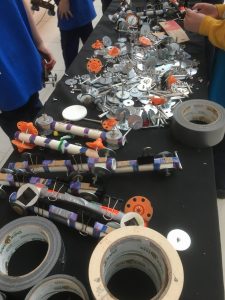
Materials set up for building a car to race on a track at MACUL.
Maker education benefits students’ creativity, problem-solving abilities, and personal identities. One white paper concluded that “the most salient benefits of maker-centered learning for young people have to do with developing a sense of self and a sense of community that empower them to engage with and shape the designed dimension of their world.”
That really resonated with me. It sounded just like that which AARI strives to do for struggling readers, with any informational text that comes across their desk or device.
There’s a lot to consider when starting up a Makerspace. Here are a few of the things I’m thinking about right now:
- How can I learn more about Makerspaces and how to integrate them into my classroom?
- How will I fund materials and technology/equipment?
- How will I organize and set up my materials and classroom to truly embrace the “openness” of a Makerspace?
- How can I best connect this to my curriculum?
- How will I protect my Makerspace, once created?
There are those that scoff at the maker movement, calling it just another fad and no better than art classes or drama clubs. And there are those of us that scoff at those people that would dismiss anything so creative and fun and enjoyable.
But if I took away anything from the MACUL keynotes, it was that being playful and creative is super important to children’s ability to learn, adapt, and grow as human beings.
So, in the spirit of taking a risk, let’s start making! If you have any ideas or suggestions for my Makerspace journey, please post on social media or in the comments below.

My first attempt at tinkering with Strawbees building kits.
Caroline Thompson (@TeacherThompson) taught middle school ELA for twelve years in Lake Orion before becoming a stay-at-home mom. She supports AARI teachers for Oakland Schools as an independent literacy consultant in the areas of digital media, professional development, and non-fiction resources. Caroline is a Reading and Writing Workshop advocate, a 2008 Oakland Writing Project Teacher Consultant, and a 2009 Oakland County Outstanding Teacher of the Year Nominee. She has a BA in English from Michigan State University and a Masters in the Art of Teaching Reading from Oakland University. She lives in Berkley, Michigan with her husband and their three year old daughter.

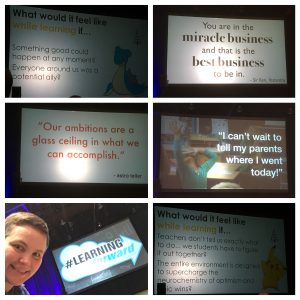
 Our annual return-to-school professional development this year was a lovely buffet of technology-themed mini-workshops to help us navigate the ever-expanding realm of ed tech. The PD was well received, and it also got me thinking.
Our annual return-to-school professional development this year was a lovely buffet of technology-themed mini-workshops to help us navigate the ever-expanding realm of ed tech. The PD was well received, and it also got me thinking. 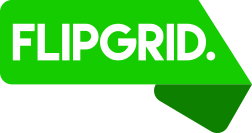 Enter “
Enter “
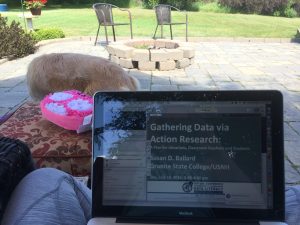
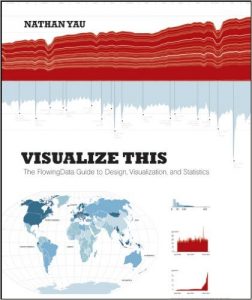
 Jianna Taylor (
Jianna Taylor (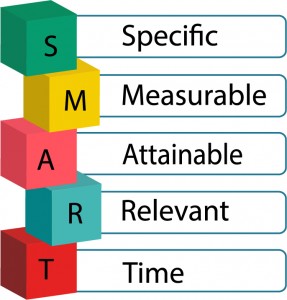 At the end of the year, teachers must officially reflect on their teaching and the impact that it had on kids. Now, this is not to say that teachers don’t reflect throughout the year and observe the impact they have on their students, but it is hard to avoid this question at the end of the year. So, I took out my neatly labeled evaluation folder and looked at my goals. My district requires that I write 3 goals that align with curriculum standards, but also with our district goals. We write these in the SMART (specific, measurable, attainable, realistic, timely) goal format. While, I’m a methodical and organized person, I realized quickly that my projected outcomes turned out very differently than I expected. Additionally, my actual student outcomes produced additional questions I need to consider.
At the end of the year, teachers must officially reflect on their teaching and the impact that it had on kids. Now, this is not to say that teachers don’t reflect throughout the year and observe the impact they have on their students, but it is hard to avoid this question at the end of the year. So, I took out my neatly labeled evaluation folder and looked at my goals. My district requires that I write 3 goals that align with curriculum standards, but also with our district goals. We write these in the SMART (specific, measurable, attainable, realistic, timely) goal format. While, I’m a methodical and organized person, I realized quickly that my projected outcomes turned out very differently than I expected. Additionally, my actual student outcomes produced additional questions I need to consider. Still, this brings up an issue I’m still pondering: I believe that in order to consider work truly digital it must be transformed technology–not able to be created without technology. Clearly, we were already doing this notebook work before technology, so how did this digital version help to accomplish my goal? My students and I quickly realized that styluses leave many things to be desired, and we knew that simply putting this work in an online notebook versus a regular notebook wasn’t enhancing the writing process so much. So, I was on my way to creating a digital reading/writing notebook as my goal stated, but at this point, I had to alter the the attainable part of this goal.
Still, this brings up an issue I’m still pondering: I believe that in order to consider work truly digital it must be transformed technology–not able to be created without technology. Clearly, we were already doing this notebook work before technology, so how did this digital version help to accomplish my goal? My students and I quickly realized that styluses leave many things to be desired, and we knew that simply putting this work in an online notebook versus a regular notebook wasn’t enhancing the writing process so much. So, I was on my way to creating a digital reading/writing notebook as my goal stated, but at this point, I had to alter the the attainable part of this goal. Then, I found myself with a day of digital mishaps that opened the opportunity for students to choose how they organized and crafted their work. I punted quickly with paper copies of the work or the choice for students to create their own page of notes and examples rather than using my digital versions. Students made their choices, and we moved forward with learning for the day. The next day, with all technology working, a student inquired if I had any paper copies like yesterday. This simple question gave me pause. I was embarrassed. I used to be so proud of the choices I provided the students in my classroom, and even more proud when they found their niche and created something that was special to them. I also used to cherish the beauty and variety that students brought to their notebooks – they had my lesson labels and tape-in notes, but they had doodles that added beauty to their pages and colors that shone through the typed notes, as well as messy, but purposeful writing. Now, the beautiful handwriting scripts are gone as are the doodles in the page margins. Their work is still unique in their content and their work is still special to who they are as writers, but it looks very uniform. When I paused, I realized that I also missed my colorful handwritten pages and the little anecdotes from kids that I would add. I got so caught up in using the technology because it was my goal that I forgot about being the teacher that I was.
Then, I found myself with a day of digital mishaps that opened the opportunity for students to choose how they organized and crafted their work. I punted quickly with paper copies of the work or the choice for students to create their own page of notes and examples rather than using my digital versions. Students made their choices, and we moved forward with learning for the day. The next day, with all technology working, a student inquired if I had any paper copies like yesterday. This simple question gave me pause. I was embarrassed. I used to be so proud of the choices I provided the students in my classroom, and even more proud when they found their niche and created something that was special to them. I also used to cherish the beauty and variety that students brought to their notebooks – they had my lesson labels and tape-in notes, but they had doodles that added beauty to their pages and colors that shone through the typed notes, as well as messy, but purposeful writing. Now, the beautiful handwriting scripts are gone as are the doodles in the page margins. Their work is still unique in their content and their work is still special to who they are as writers, but it looks very uniform. When I paused, I realized that I also missed my colorful handwritten pages and the little anecdotes from kids that I would add. I got so caught up in using the technology because it was my goal that I forgot about being the teacher that I was. 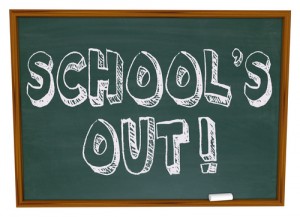 As I reflect at the end of the year, I recall what a mentor said to me–that with older students like mine, I could let them choose. She suggested a short research project where kids choose a way to do their writing work as I offer them options and teach about how writing in different genres requires different tools. I know now that my projected outcomes differed from my goal statements because we had to find the right tools for our needs. While I did accomplish my goal – incorporating a digital reading/writing notebook into students’ practice, I am left with my second question: what is a workshop teacher to do without paper notebooks? And I am still thinking about how digital work can enhance the reading/writing workshop in my classroom.
As I reflect at the end of the year, I recall what a mentor said to me–that with older students like mine, I could let them choose. She suggested a short research project where kids choose a way to do their writing work as I offer them options and teach about how writing in different genres requires different tools. I know now that my projected outcomes differed from my goal statements because we had to find the right tools for our needs. While I did accomplish my goal – incorporating a digital reading/writing notebook into students’ practice, I am left with my second question: what is a workshop teacher to do without paper notebooks? And I am still thinking about how digital work can enhance the reading/writing workshop in my classroom. Amy Gurney is an 8th grade Language Arts teacher for Bloomfield Hills School District. She was a facilitator for the release of the
Amy Gurney is an 8th grade Language Arts teacher for Bloomfield Hills School District. She was a facilitator for the release of the  Description:
Description: All sessions are 1:00pm – 4:15 pm
All sessions are 1:00pm – 4:15 pm